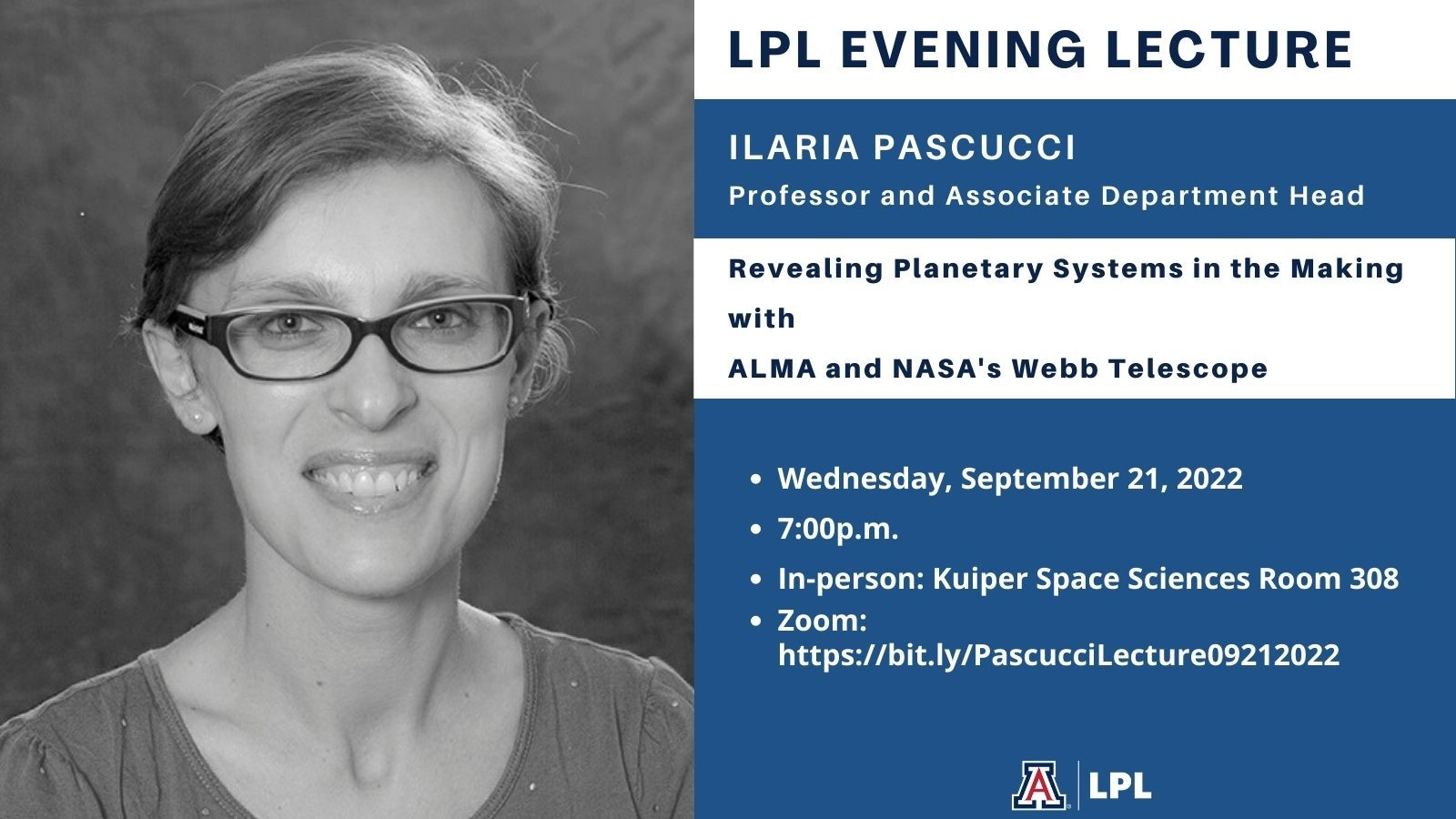LPL Newsletter for September 2022
Thursday, September 1, 2022
This month’s newsletter covers the exciting discovery by LPL Research Scientist Veronica Bray and colleagues of a brand new impact basin off the coast of Africa. As Veronica told me, "It was surreal being one of the first to have eyes-on a newly discovered impact structure!” The crater is about the same age as the dinosaur killing Chicxulub impact and the authors speculate the impactors could be related. I particularly like this discovery as three LPL investigators (Alan Hildebrand, David Kring, and Bill Boynton) were co-authors on the original discovery of Chicxulub as well.
A second news release focuses on the first exoplanet science result from the Early Release Science program for JWST. The ERS program is an open, collaborative project with hundreds of scientists participating. LPL Director’s Postdoc Sarah Moran played an important role in analyzing the transit dataset and is recognized as one of the top tier of authors. The UA press release highlighted the role of LPL and Steward scientists in this work. Expect a lot more great exoplanet science in the months ahead!
Finally we pass along the UA press release discussing the monitoring of Starlink satellite brightness by UA Engineering undergraduate Grace Halferty who works with Professor Vishnu Reddy. The existing and upcoming megaconstellations present significant concerns for astronomy and several UArizona research teams are observing and considering the implications. It is good to see an undergraduate researcher help tackle the problem.

More than one asteroid could have spelled doom for the dinosaurs
A newly discovered impact crater below the seafloor hints at the possibility that more than one asteroid hit Earth during the time when dinosaurs went extinct. LPL Research Scientist Veronica Bray co-authored the study.

With Webb Telescope, UArizona astronomers help detect carbon dioxide in exoplanet atmosphere
LPL Postdoctoral Research Associate Sarah Moran is on the team that presented the first-ever detailed evidence for carbon dioxide in a planet outside our solar system.

As reflective satellites fill the skies, UArizona students are making sure astronomers can adapt
Led by LPL Professor Vishnu Reddy, UArizona students have completed one of the first comprehensive peer-reviewed brightness studies to characterize mega-constellation satellites cluttering the skies.


